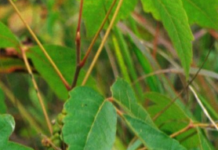Washington, D.C., Dec. 19 2017 – The Departments of Agriculture, Defense and Interior have designated southern Georgia as the newest Sentinel Landscape designed to protect natural resources, enhance habitat for several key species, and maintain military readiness. Through this partnership, more than 20 federal, state and local partners with similar goals work together to sustain working farms and forests, protect vital habitat for several important species and enhance military readiness. Building on a legacy of successful, collaborative land protection in Georgia, diverse partners have identified about 1.3 million acres as critical to helping the Sentinel Landscapes Partnership.
The Georgia Sentinel Landscape includes nine important military installations and ranges, including Fort Stewart, Fort Benning, and Townsend Bombing Range.
“It is critical to protect agricultural lands and wildlife habitat for current and future generations,” said Acting Agriculture Deputy Under Secretary for Farm Production and Conservation Robert Johansson. “This unique partnership can achieve greater gains by protecting private working and natural lands that are compatible with the military’s need for open space to conduct sensitive missions. Together we will keep our nation strong militarily, while also continuing to ensure it provides food and fiber to the world.”
The military network stretching over the southern portion of the state offers diverse testing, training, and operational resources and capabilities to service men and women from each military branch.
Identifying land for conservation
The Natural Resources Conservation Service (NRCS) and Farm Service Agency (FSA) are working closely to meet the three primary goals of protecting natural resources, creating or maintaining habitat for diverse species, and enhancing military readiness.
NRCS and FSA are helping private landowners and agricultural producers voluntarily protect and improve productive and viable working agricultural lands to sustain Georgia’s food and fiber production using technical assistance and financial assistance available through Farm Bill programs.
FSA is working to ensure that landowners and producers within Sentinel Landscapes have access to the tools and resources they need to keep their land in agriculture and to support the next generation of farmers and private forest landowners. Offering several farm safety net programs, credit and voluntary conservation programs, FSA, NRCS and Risk Management Agency programs address a variety of farming needs and related conservation issues.
NRCS provides assistance to producers to help make conservation improvements that improve and protect working lands while also increasing productivity and resiliency. Programs like the Environmental Quality Incentives Program and Conservation Stewardship Program help producers develop a conservation plan and funding to implement conservation practices. Meanwhile, the Agricultural Conservation Easement Program enables landowners to protect agricultural lands and wetlands for the long term, which offers an income source while helping them to improve the quality of their land.
Protecting wildlife and natural resources
The Georgia Sentinel Landscape partners seek to leverage broad goals and shared priorities to ensure the continued viability of important military installations and support the protection of habitat corridors for diverse important species such as the gopher tortoise, red-cockaded woodpecker, and eastern indigo snake.
The partnership seeks to protect a core of at least 5,000 acres of important farmlands within the next five years. Another goal calls for the protection of more than 136,000 acres in the Savannah River watershed over the next 20 years.
Partners also hope to protect more than 20 additional viable gopher tortoise populations over five years in order to make it unnecessary to list this species under the Endangered Species Act.
Additional partnership goals include increasing public access to outdoor recreational opportunities, improving management practices on private lands, and expanding outreach activities to private landowners within the landscape.
“This collaborative effort is a clear example of the value of working across conventional boundaries,” said Lucian Niemeyer, Assistant Secretary of Defense for Energy, Installations and Environment. “When partners at the federal, state and community levels work together toward a common goal, everyone wins. Sentinel Landscape partners are collaborating to promote military readiness, support the warfighter, and ensure the safety of security of this nation.
About Sentinel Landscapes
The Georgia Sentinel Landscape joins six other designations since USDA, DoD and DoI launched the effort in 2013 through a Memorandum of Understanding. They are Fort Huachuca (Arizona); Avon Park Air Force Range (Florida); Patuxent River Naval Air Station (Maryland) also referred to as Middle Chesapeake (Maryland, Delaware and Virginia); Camp Ripley (Minnesota); Eastern North Carolina (North Carolina); and Joint Base Lewis-McChord (Washington State).
Learn more about this partnership by visiting the Sentinel Landscapes website  . For more information on conservation programs available through NRCS and FSA, contact your local USDA service center.
. For more information on conservation programs available through NRCS and FSA, contact your local USDA service center.




